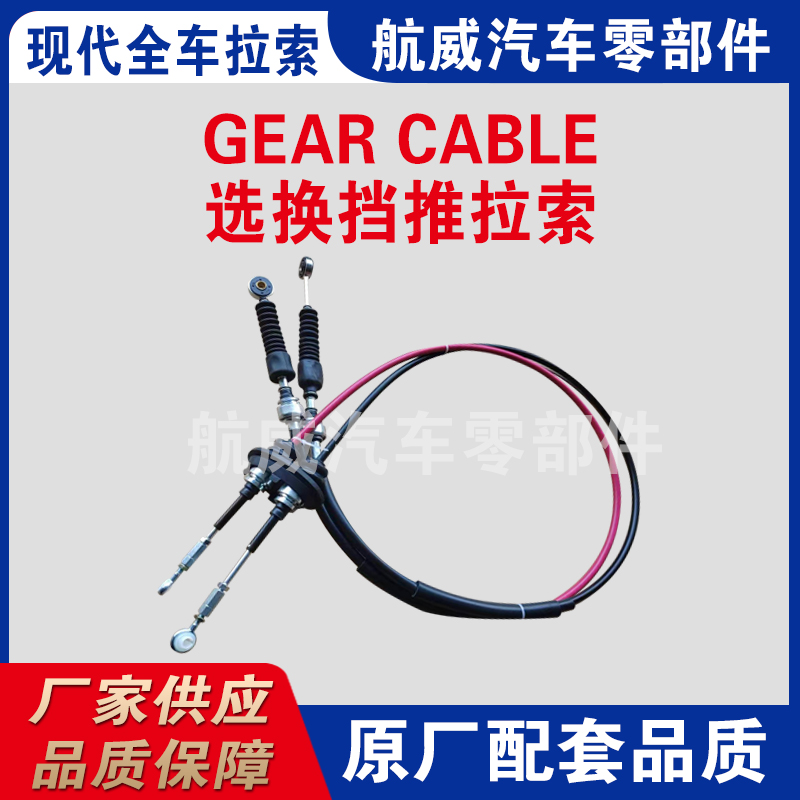High-Quality Gear Cable for Smooth Gear Shifting
The Importance and Functionality of Gear Cables in Bicycling
Gear cables are an essential component of the bicycle's transmission system, responsible for transferring the rider's input on the gear shifters to the derailleurs, which ultimately change the gear ratios. A well-functioning gear cable ensures smooth and precise shifting, allowing cyclists to adapt their pedaling to varied terrain and riding conditions. Understanding the functionality and maintenance of gear cables is crucial for cyclists who seek optimal performance and longevity in their bicycles.
At its core, a gear cable consists of a steel wire running through a protective outer casing. This wire can be pulled or pushed by the shifter, which in turn moves the derailleur to shift the chain between gears. The quality and condition of the gear cable significantly affect the bike’s overall performance. Over time, gear cables can become frayed, corroded, or stretched, leading to sluggish shifts or even complete failure. Regular inspection and maintenance of gear cables can prevent these issues, ensuring that cyclists maintain control and efficiency while riding.
One of the key indicators that a gear cable needs attention is the shifting performance itself
. If a bike begins to skip gears or requires excessive force to initiate a shift, it may signal that the cable has worn out or that it needs lubrication. Lubrication is vital for smooth operation; a dry cable can create friction and hinder performance. However, it’s important to use the right type of lubricant and avoid over-lubrication, which can attract dirt and grime, further damaging the cable.gear cable

When replacing gear cables, cyclists should consider investing in high-quality components. Stainless steel cables and Teflon-coated cables offer enhanced durability and reduced friction, leading to better shifting performance over time. Additionally, using the correct cable length is crucial; too short and it can create tension, too long and it can lead to sloppy shifting. Proper installation is equally important, as improper routing can lead to increased friction and eventual failure.
The choice between internal and external cabling systems also plays a role in the performance and maintenance of gear cables. Internal cables, often found in high-end or modern bicycles, offer a sleeker appearance and reduced exposure to the elements, which may lead to less wear and tear. Conversely, external cables, which are more common in older bikes, are easier to replace and maintain but may require more frequent cleaning due to exposure to dirt and moisture.
In conclusion, gear cables are indispensable for any cyclist seeking to achieve smooth and precise gear shifts. Regular maintenance, prompt replacement when necessary, and choosing high-quality components can significantly enhance a cyclist's experience on the road or trail. By understanding the functionality of gear cables and taking proactive steps to care for them, cyclists can enjoy a more efficient and enjoyable ride, navigating diverse landscapes with confidence. Whether you're a casual rider or an avid cyclist, paying attention to your gear cables can make all the difference in your cycling experience.
-
Workings of Clutch Pipe and Hose SystemsNewsJun.04,2025
-
The Inner Workings of Hand Brake Cable SystemsNewsJun.04,2025
-
The Secrets of Throttle and Accelerator CablesNewsJun.04,2025
-
The Hidden Lifeline of Your Transmission Gear Shift CablesNewsJun.04,2025
-
Demystifying Gear Cables and Shift LinkagesNewsJun.04,2025
-
Decoding Clutch Line Systems A Comprehensive GuideNewsJun.04,2025
